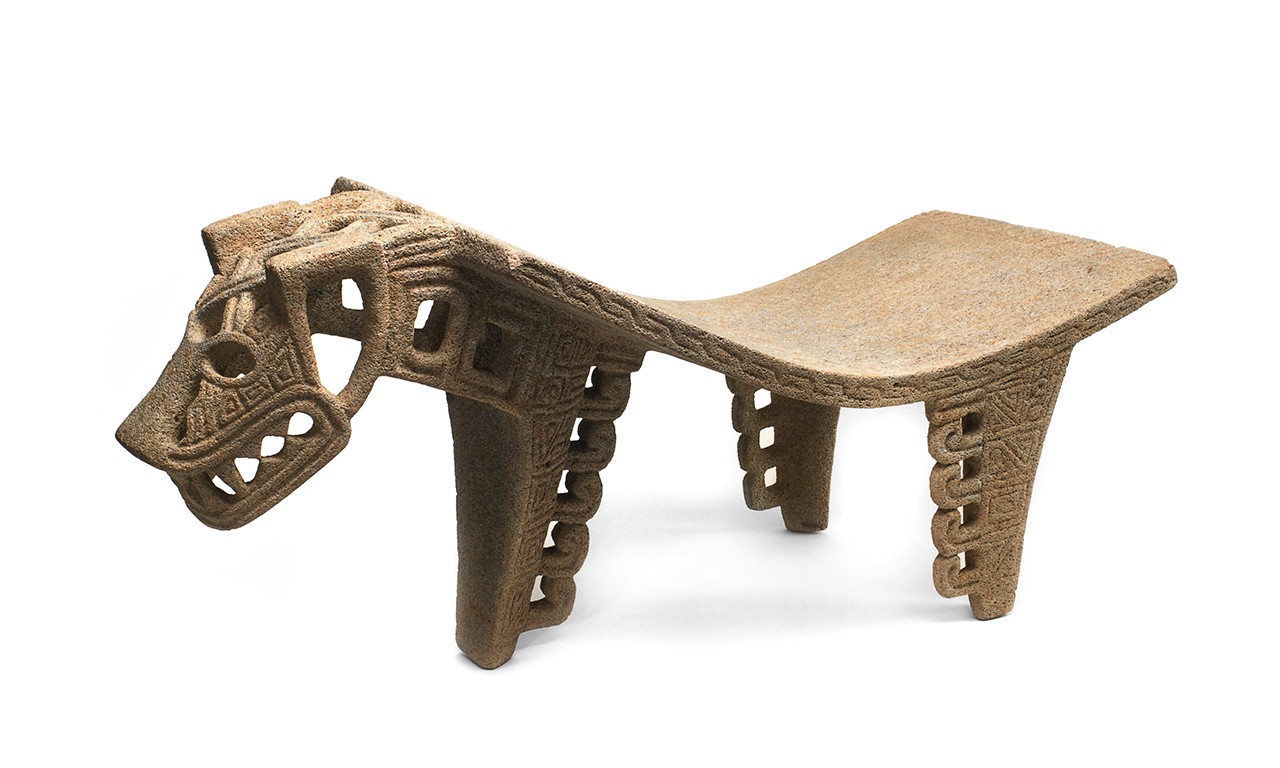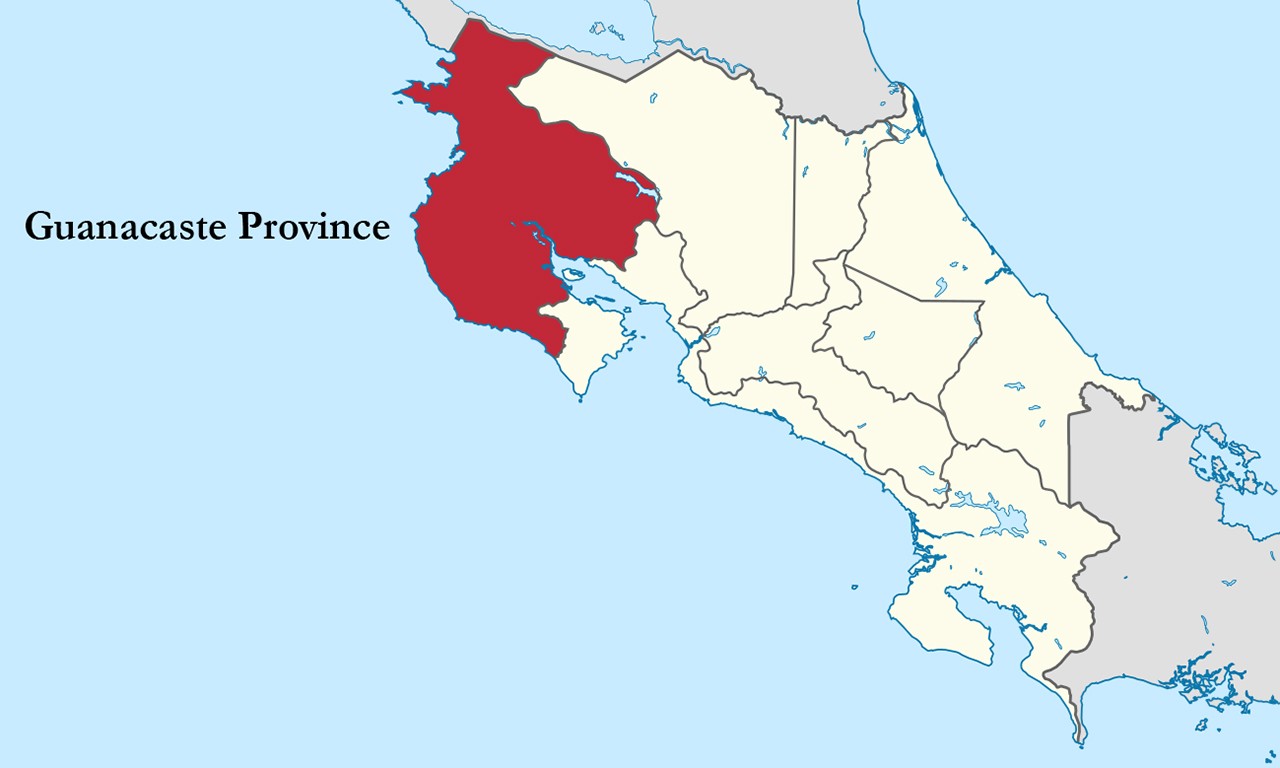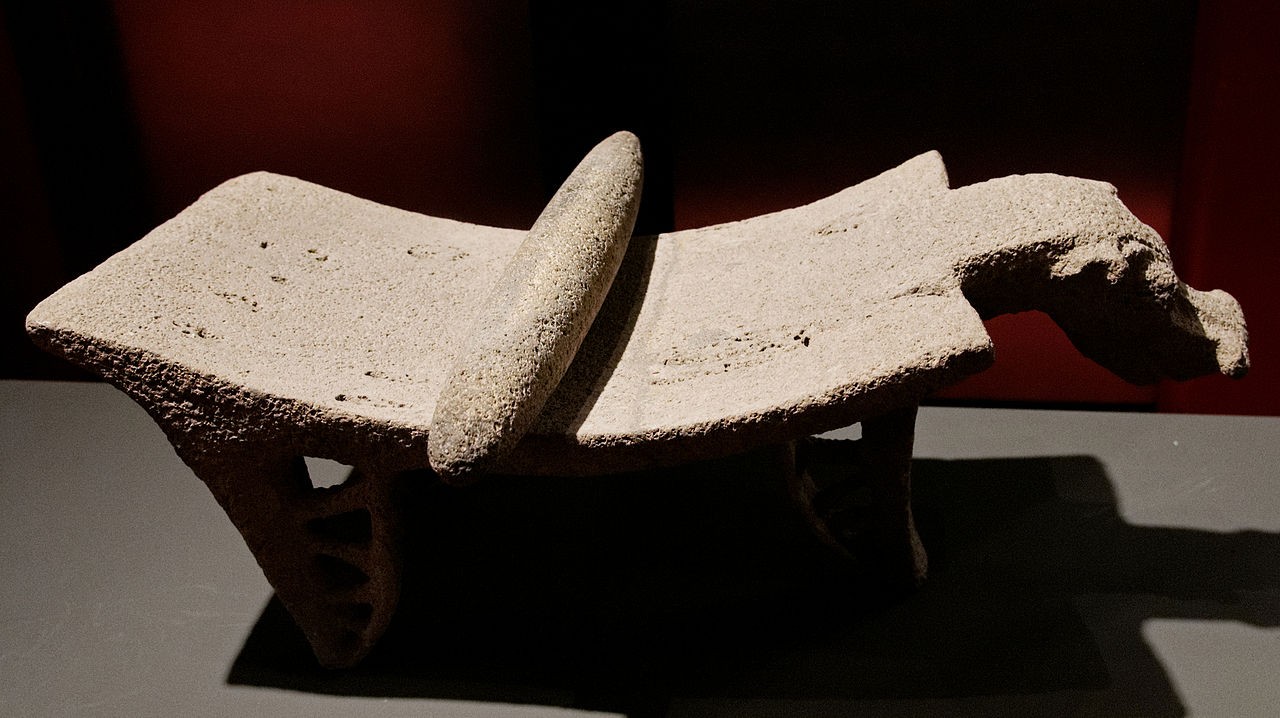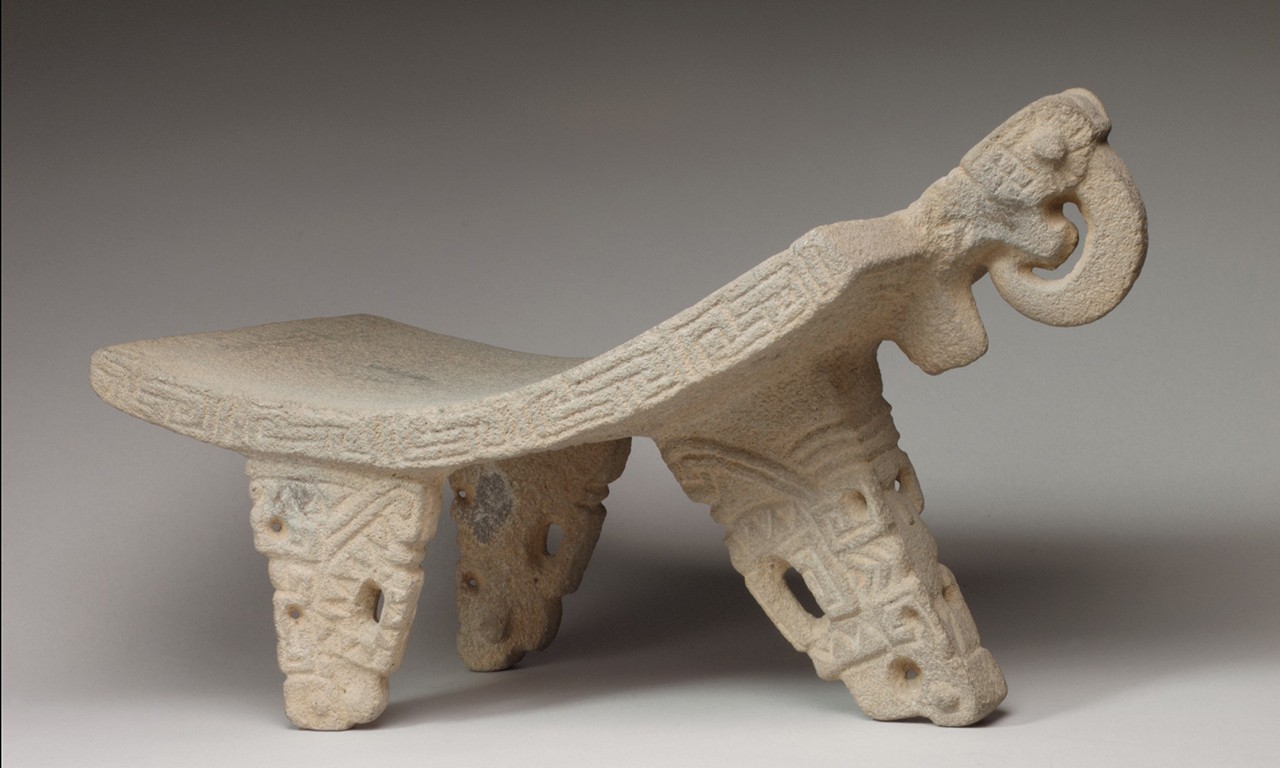2002 North Main Street
Santa Ana, California 92706
TEL: 714.567.3600
Unearthing the Night Sun: Jaguar Metate from Costa Rica
 |
| Metate in Form of a Jaguar with Repeating Parrot Motif, 4th-7th Century Guanacaste-Nicoya Zone;Costa Rica Volcanic stone; 12 3/8 x 11 5/8 x 30 1/4 in. 97.40.1 Dr. James Block Pick and Dr. Rosalyn M. Laudati Fund Purchase |
Food for the Soul
A quick glance at Maslow’s hierarchy of needs—a food pyramid of sorts for mental sustenance—reveals that physical sustenance is of foundational importance to humans. It is no surprise then that just about every culture on earth has invested a great amount of time and effort in creating objects related to harvesting, processing, and consuming food. Some cultures go further still and incorporate food and its surrounding material culture into supernatural or religious practices. Frequent visitors to the Bowers Museum will be very familiar with the volcanic stone metate on display in our Thompson Foyer. It might be assumed that this would have, like most metates, been used to grind dried corn into cornmeal, but this object likely held a symbolic rather than a utilitarian function.
 |
| Vector map by Wikimedia Commons user TUBS, licensed under CC BY-SA 4.0 |
Lacey Stone
The metate comes from the Guanacaste-Nicoya Zone of Costa Rica, an area which is roughly encompassed by the modern-day region of Guanacaste. The tradition of complex stone carving in the Guanacaste-Nicoya Zone appears from archaeological evidence to date to about 300 BCE, approximately 600 years before the earliest estimated date that this might have been made. Decorated metates come from excavations which could be as early as 300 BCE and though they are already tripodal and bear flat plates, they tend to be decorated on their undersides and legs whereas later tripods such as this feature prominent zoomorphic designs extending from one of their three legs. This metate appears to come from a later period of production between approximately 300 and 700 CE when carvers had mastered the creation of lighter, openwork designs. After about 1000 CE, the Guanacaste-Nicoya Zone had ceased to be a center for the production of this kind of high-quality stonework.
Basalt of the Earth
There are several features of this metate which immediately greet the viewer. The first of these is that almost all stone carvings from the region were made from volcanic basalt. As it happens Nicoya is one of eight major complexes of igneous rock in Costa Rica. The metate is tripodal, each of its three legs decorated with what one scholar believes to be stylized, inverted bird heads. The head is an effigy of a feline, specifically a jaguar. The area of the head between the top of the nose and the crest of the head consists of two strands of undulating stone lines that create a band of repeating diamond shapes. With lips pulled back and sharp teeth bared the jaguar is portrayed as a truly terrifying beast. Along the object’s back is an eloquently sloped plate with rimless border; an interlocking pattern appears on each of the plate’s longest sides.
 |
| Guanacaste-Nicoya Zone metate with a mano, 300-700 Photographed by Marie-Lan Nguyen in 2011, licensed under CC BY 2.5 |
Hands of Fate
A mortar without a pestle is functionally just a heavy bowl and the same can be said of a metate without a mano, a round or oblong flattened stone object which can be dragged across the surface of a metate’s plate to crush whatever unlucky substance comes between the two. One of the most intriguing notes surrounding Guanacaste-Nicoya metates is that of a group of 15 of them unearthed at Las Huacas, not even one was buried alongside a mano. This paired with the lack of wear on the backs of every such metate that has been found indicates that they may never have been used for grinding, or if there was some unknown reason for having been buried without their manos, that they were only used on rare ceremonial occasions. Several mutually inclusive theories have been suggested as to why they were owned but not used by the political elite of the region: they may have been primarily created as prestige objects to draw a parallel between their owner’s position and the grinding of staple foods; they may have primarily been used as seats; or they could have been created to be used in the afterlife. The latter of these theories is particularly supported by the metate having been a funerary object.
 |
| Bird-headed metate in the collections of the Metropolitan Museum of Art |
Got a Jaguar by the Jowls
Effigy-headed metates such as this incorporated several types of zoomorphic motifs, each holding a different meaning. The head itself could be that of a bird, saurian, canine, or feline, and be supported by an even wider range of creatures, including monkeys. The jaguar on this metate would have represented strength, a key characteristic of the largest feline in the western hemisphere. A previous Bowers curator felt that the iconography of this object speaks to its symbolic role in transitioning the owner from this world and the next. Other experts have suggested that these objects may have had a connection to the afterlife because jaguars often represented the “night” sun of the underworld. Metates themselves are objects which change the state of corn from kernels to dust which is itself a metamorphosis of sorts.
Text and images may be under copyright. Please contact Collection Department for permission to use. References are available on request. Information subject to change upon further research.

Comments